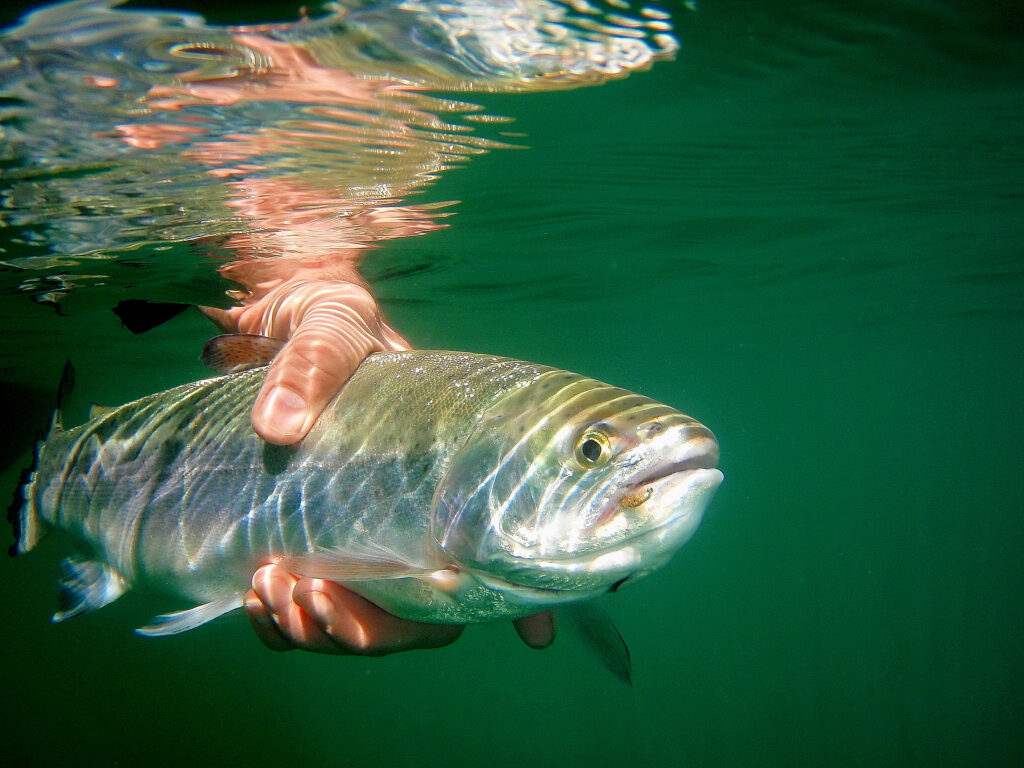Destination Reports, Expert Advice, General
Chasing Big Fall Trout? Don’t Overlook Shrimp Imitations
With fall upon us it’s time to think of using fly imitations outside of the ever-popular lineup of chironomids, leeches and dragons. These insect imitations are all very productive but there are other options to use when fishing our interior lakes at the end of the season..
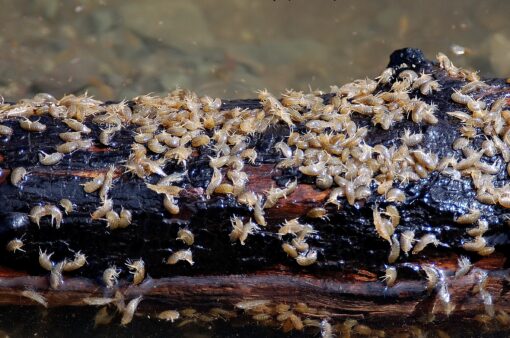
It’s hard to believe that one of the most abundant food sources in our interior lakes is the least imitated by anglers. Gammarus shrimp are a significant part of a trout’s diet as they are available in most of our interior lakes year-round. I feel this food source is often overlooked by anglers due to the fact shrimp can be a little more difficult to imitate than other imitations. The key to achieving success with shrimp imitations is working them in areas where the natural ones would be commonly found.
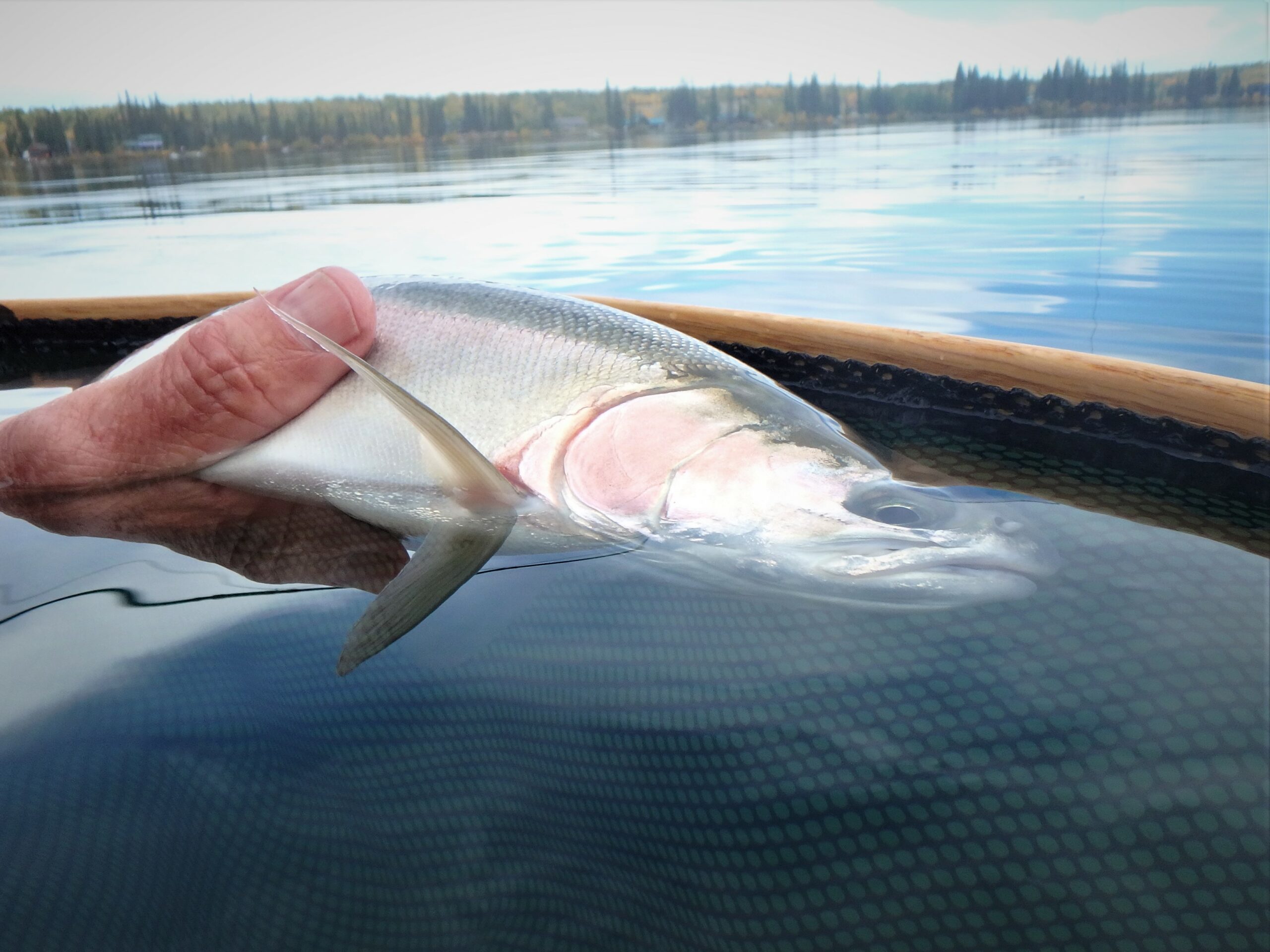
Techniques when using shrimp patterns
There are several ways in which a shrimp can be fished successfully in any lake. The most common method is with a sinking line and a small baggy or seal dubbed imitation retrieved over a shoal or shallow flat. The retrieve is quite simple using only requiring short choppy strips pausing frequently to mimic the movement of a natural shrimp. To keep the fly line from spooking the fish, a leader from eight to ten feet long should be used. My personal preference is a 9-foot tapered leader with a six-pound tippet. The use of tapered leaders helps the fly look more natural in the water while making it easier to cast in the wind. Now that the most common technique has been covered, it’s time to get a little more technical when using shrimp.
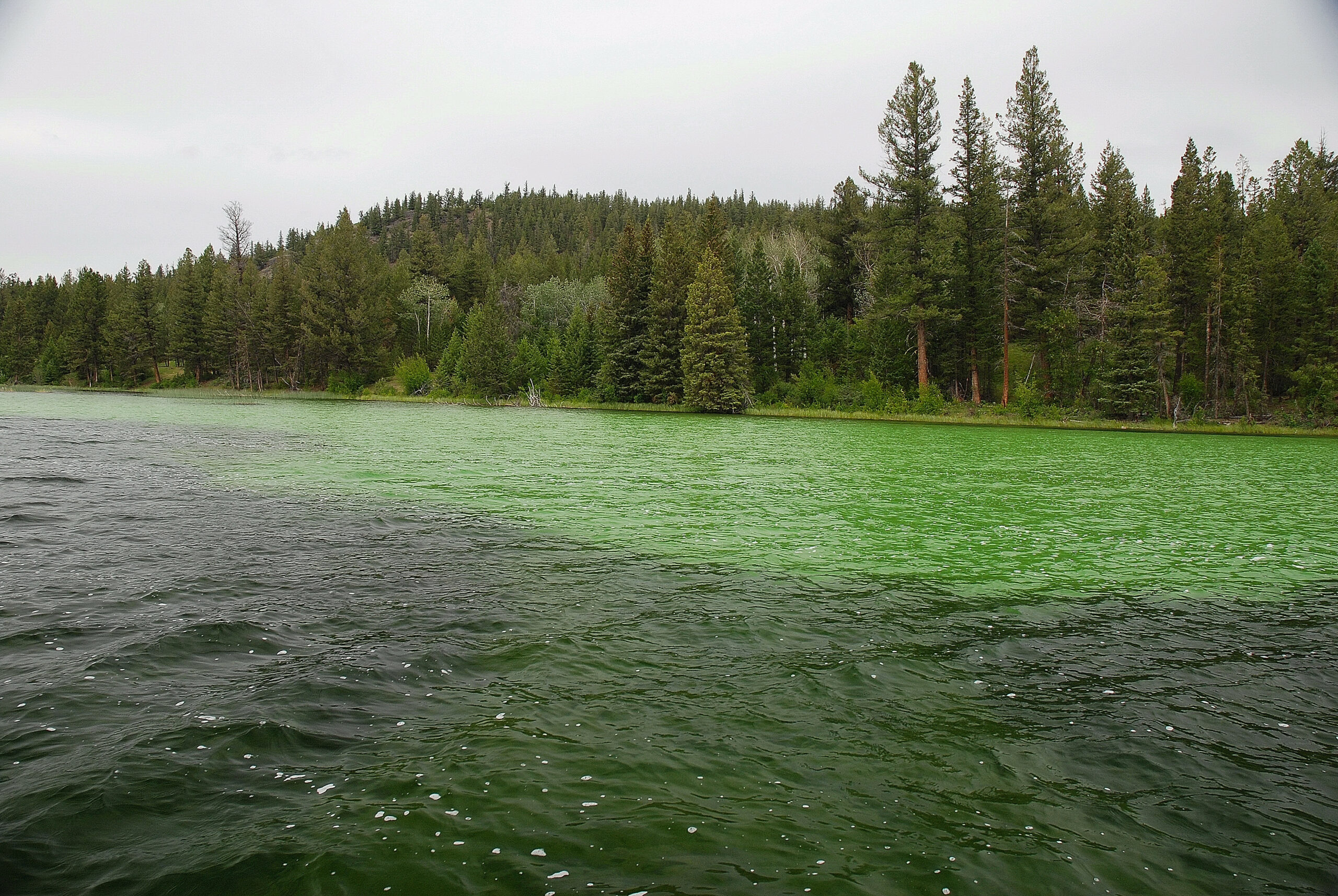
A highly productive method of fishing a shrimp is by using a fly line in a manner that it was not really designed to be used. Instead of using a floating line and a sinking fly, I often use a fast sinking (type 6) line and a buoyant fly (Werner Shrimp). What this technique allows the angler to do is target spooky fish without scaring them off a shoal. The way it works is by simply laying out a cast in an area where fish can be seen and allowing the line to sink to the bottom. When the fish appear back in the area where the cast was made then start retrieving and the floating shrimp will be pulled towards the bottom by the sinking line. This technique makes the shrimp look as if it’s trying to drive back to the bottom to hide. The fly seldom gets hung up on the bottom as it floats up in between strips.
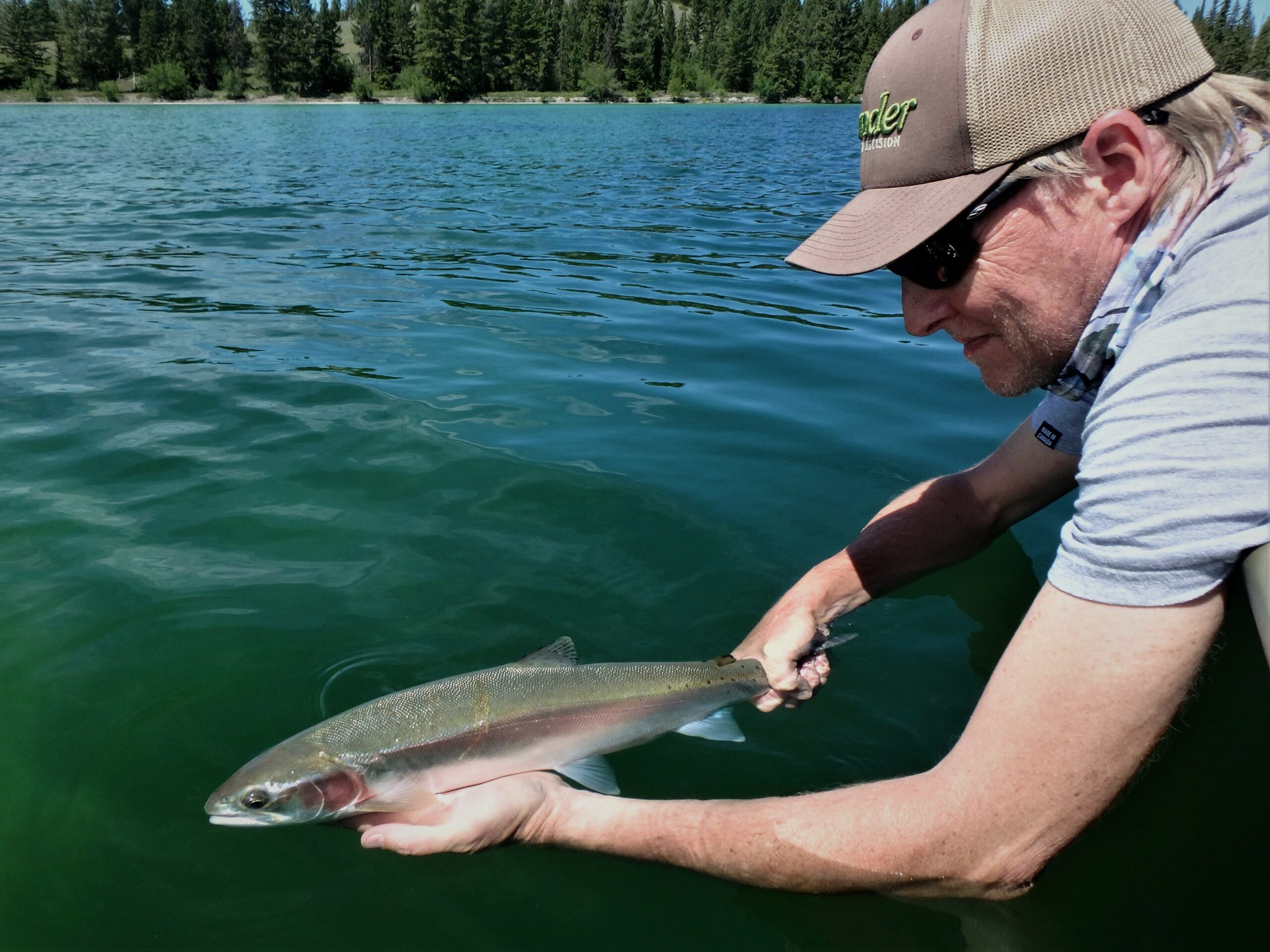
Another great way to pursue trout with a shrimp pattern is with the use of clear intermediate sinking lines that sink at one to two inches per second. These lines are perfect for pursuing large spooky trout that don’t just grab any fly that passes in front of them.
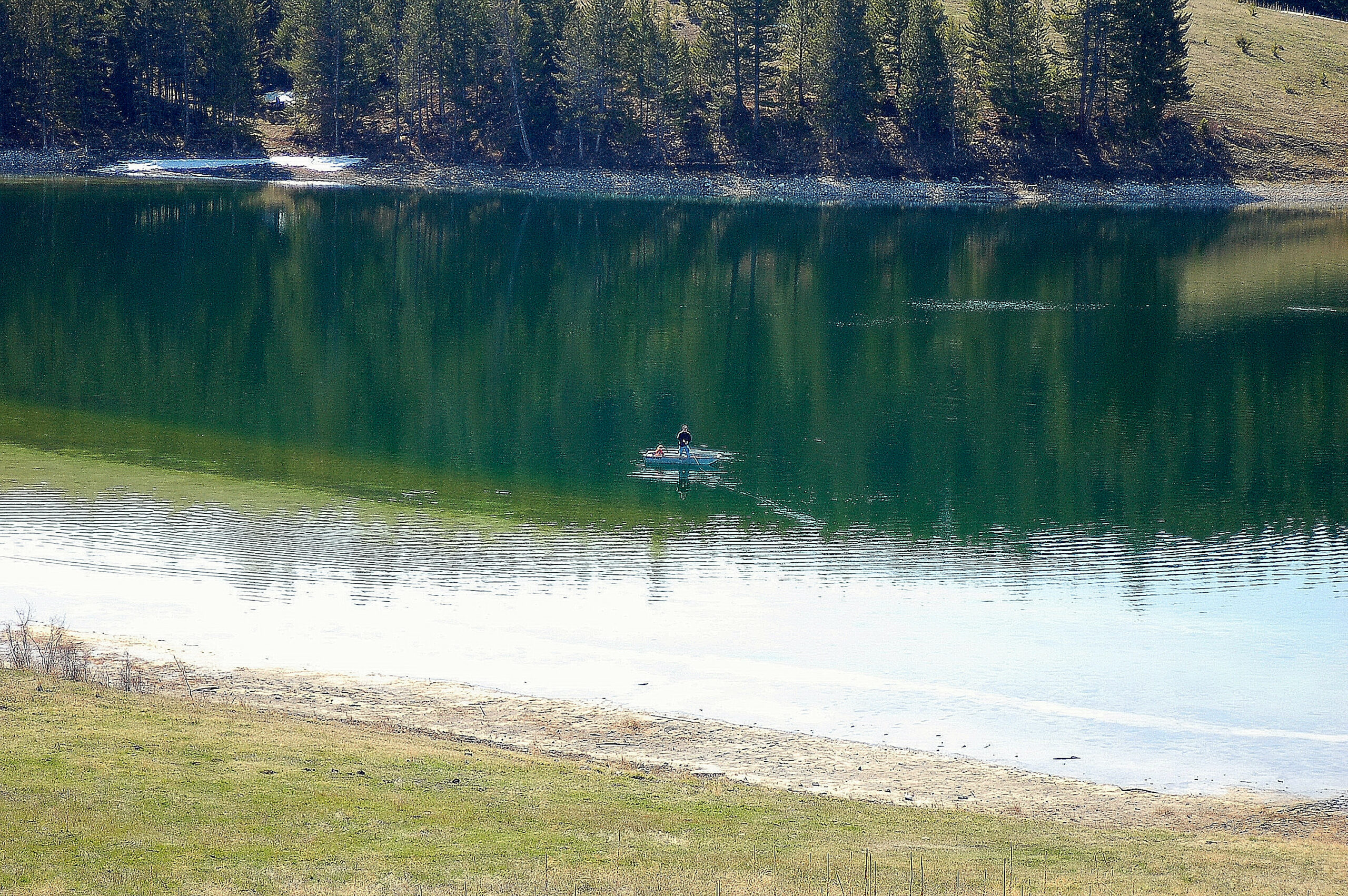
My favorite way to fish shrimp imitations is with use of a full floating line and a long leader. When I say long, I’m talking about leaders to twelve feet in some cases. This method is my favorite for many reasons including the fact that fighting a fish with a floating line is very enjoyable. To execute it perfectly, first the boat must be double anchored on the edge or outside of a shoal. The anchoring is crucial as the boat should not swing in the wind. On extremely windy days, the wind should be at your back, so the line is kept straight by the waves and moment of the water. This is very similar to the way a chironomid is fished without an indicator. When using a full floating line, the strike is many times very gentle with the line merely tightening when a fish picks it up. All the above methods work extremely well when executed properly, the key is to find one you are comfortable with and work from there until you have mastered it.

Productive shrimp imitations
Freshwater shrimp can be made from a variety of materials including seal dubbing, glass beads and chenille but more important than the actual materials is the size and color of the fly. After combing through my interior fly boxes, I came up with my four of the most productive shrimp imitations.
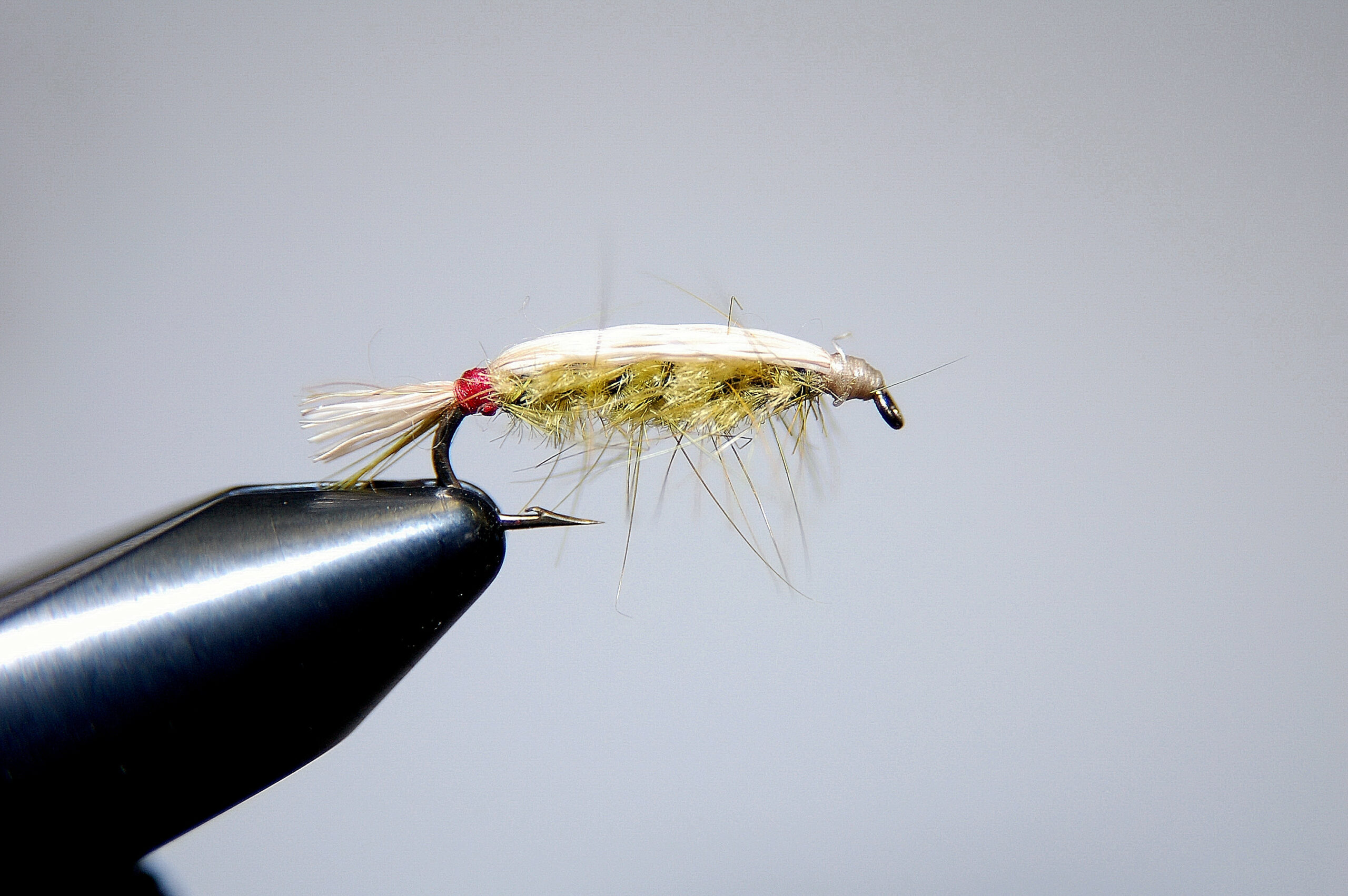
Werner Shrimp
The Werner shrimp pattern is an old imitation of a Gammarus shrimp. One of its most important characteristics is the fact it floats. On the negative side the deer hair shell back gets chewed up quickly from the fish’s teeth. Once it’s chewed up and ragged, don’t lose confidence in the fly as it makes it look buggier to the fish and still works well. I find the most popular color is a light green body tied on a #12 hook with natural colored deer hair.
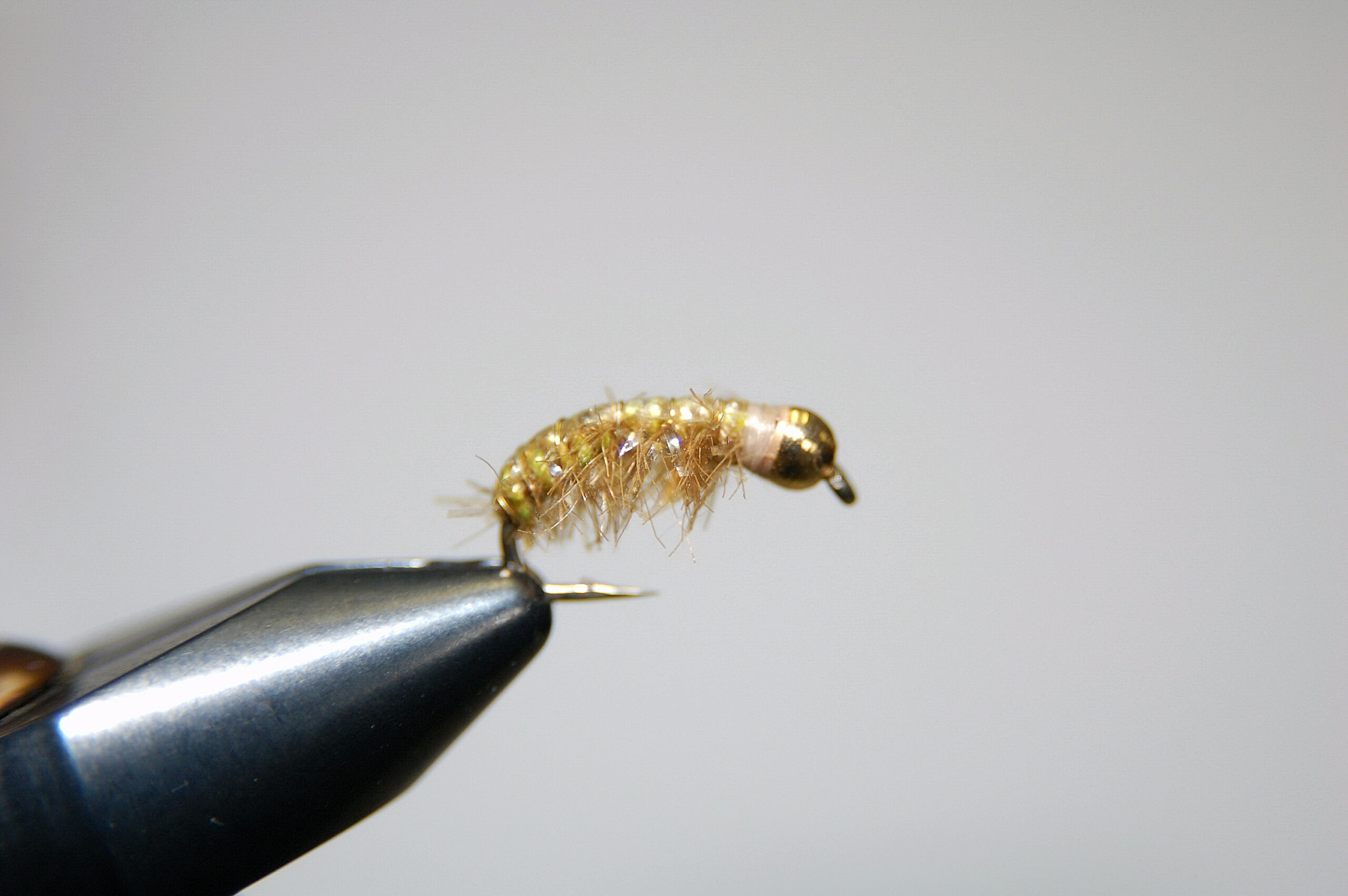
Baggy Shrimp
This is my personal favorite when it comes to imitating Gammarus shrimp as this imitation can be tied in a variety of sizes and colors and is productive both weighted and non-weighted. This Imitation can be weighted by simply adding a bead to the hook before trying the fly. The body is made from small crystal chenille and the shell back is either 1/8” midge flex or a strip of plastic bag from a plastic bag. I always wrap fine gold wire over the plastic shell to give the fly segmentation and durability.
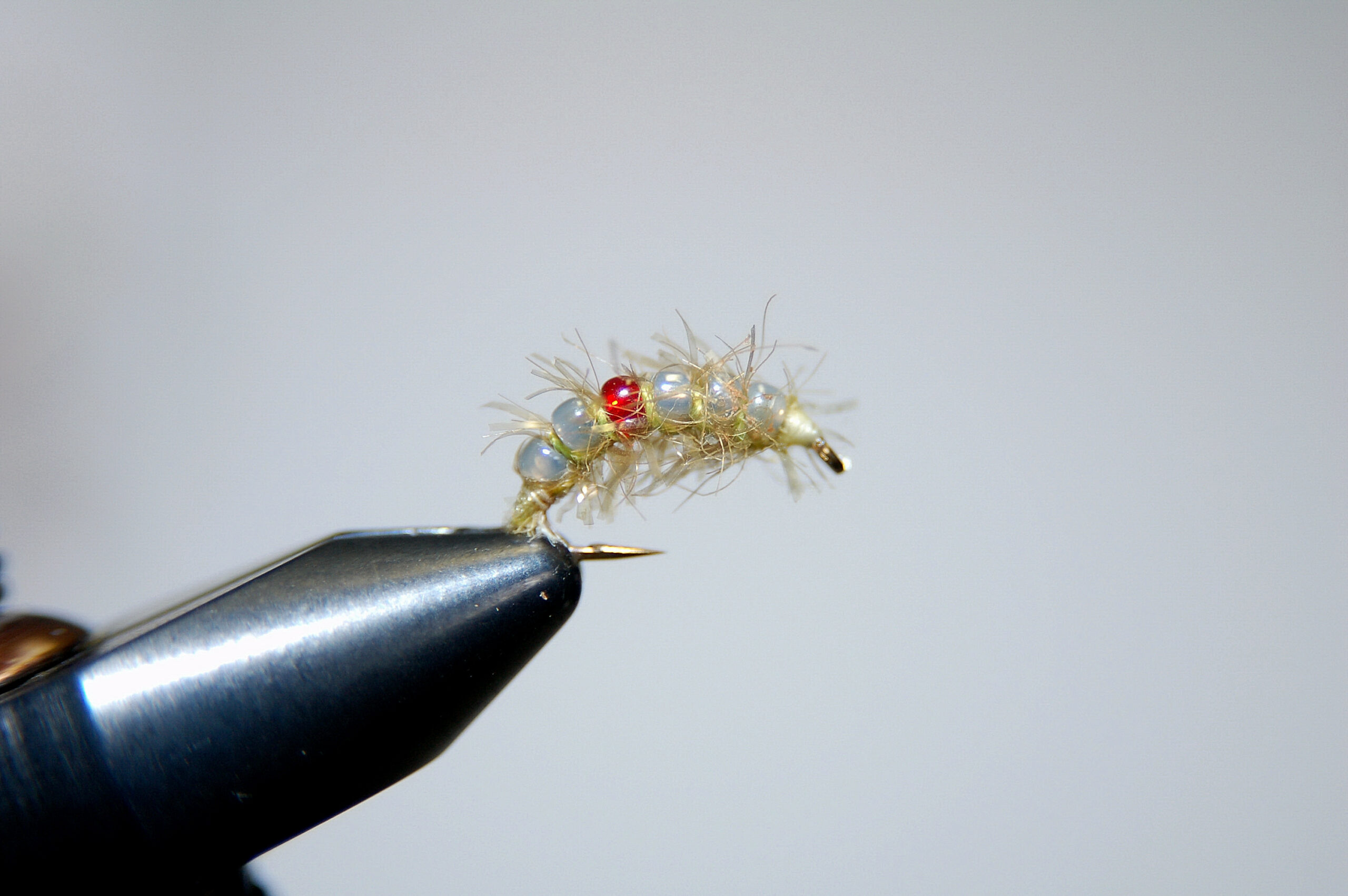
Glass Bead Shrimp
The glass bead shrimp is another fly that works well due to its realistic appearance and sinking factor. The glass beads come in a wide variety of colors and sizes making the possibilities endless. This imitation looks very realistic when a fine crystal chenille in wrapped between the beads. A red or orange bead can be added to the middle of the fly to make it resemble a pregnant shrimp.
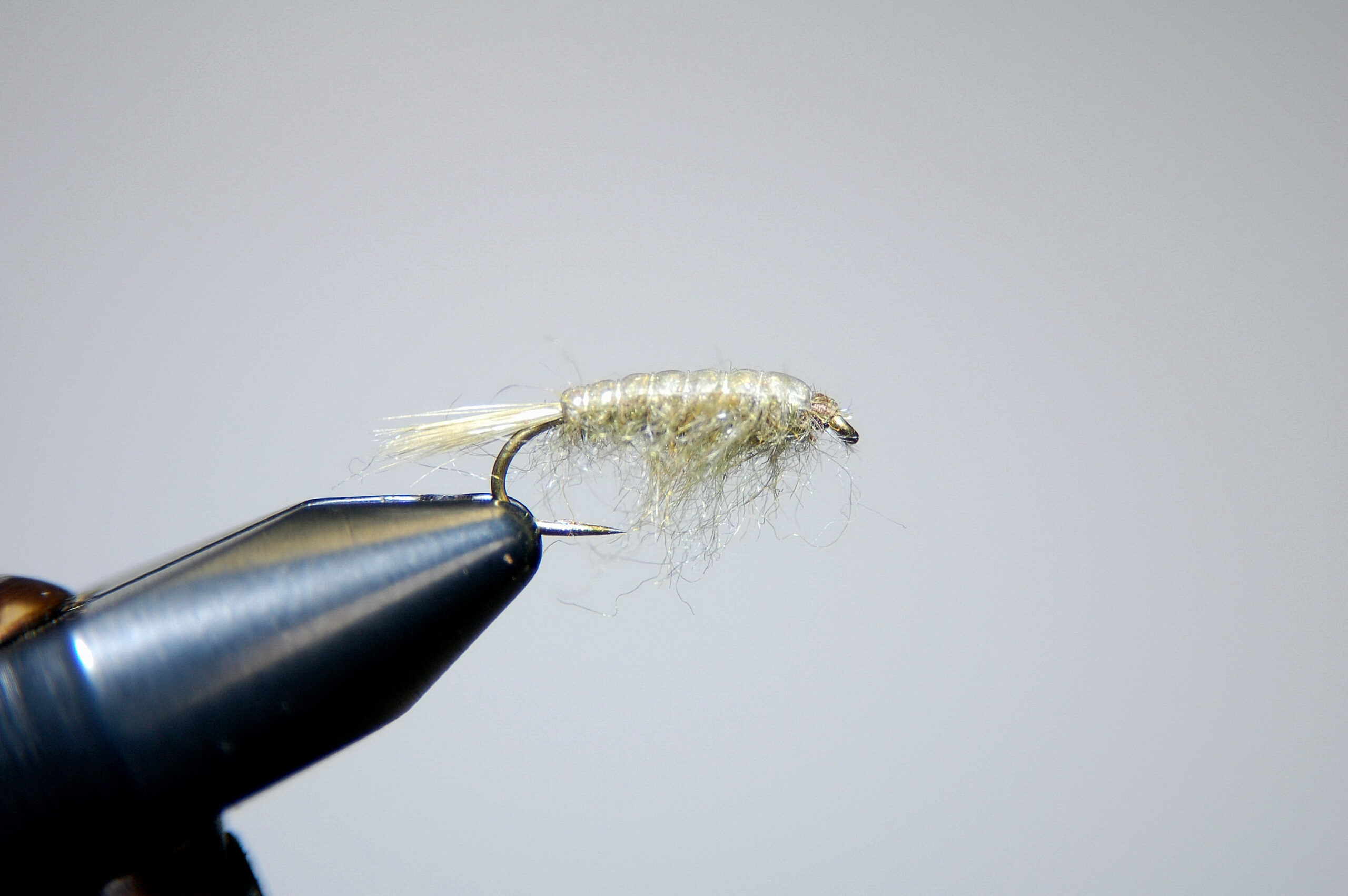
Dubbed shrimp
This is one of the first Gammarus shrimp imitations ever tied for the commercial market. Even though the concept has not changed much over the years the fly still works wonders for big rainbows. This fly sinks slowly, which means it needs to be fished behind a type 3 sinking line. This pattern is also simple to tie and can be easily altered if desired. Over the years I have found this pattern most productive in light grays and olive greens. This imitation is a must have for anglers wanting to imitate freshwater shrimp in our interior lakes.
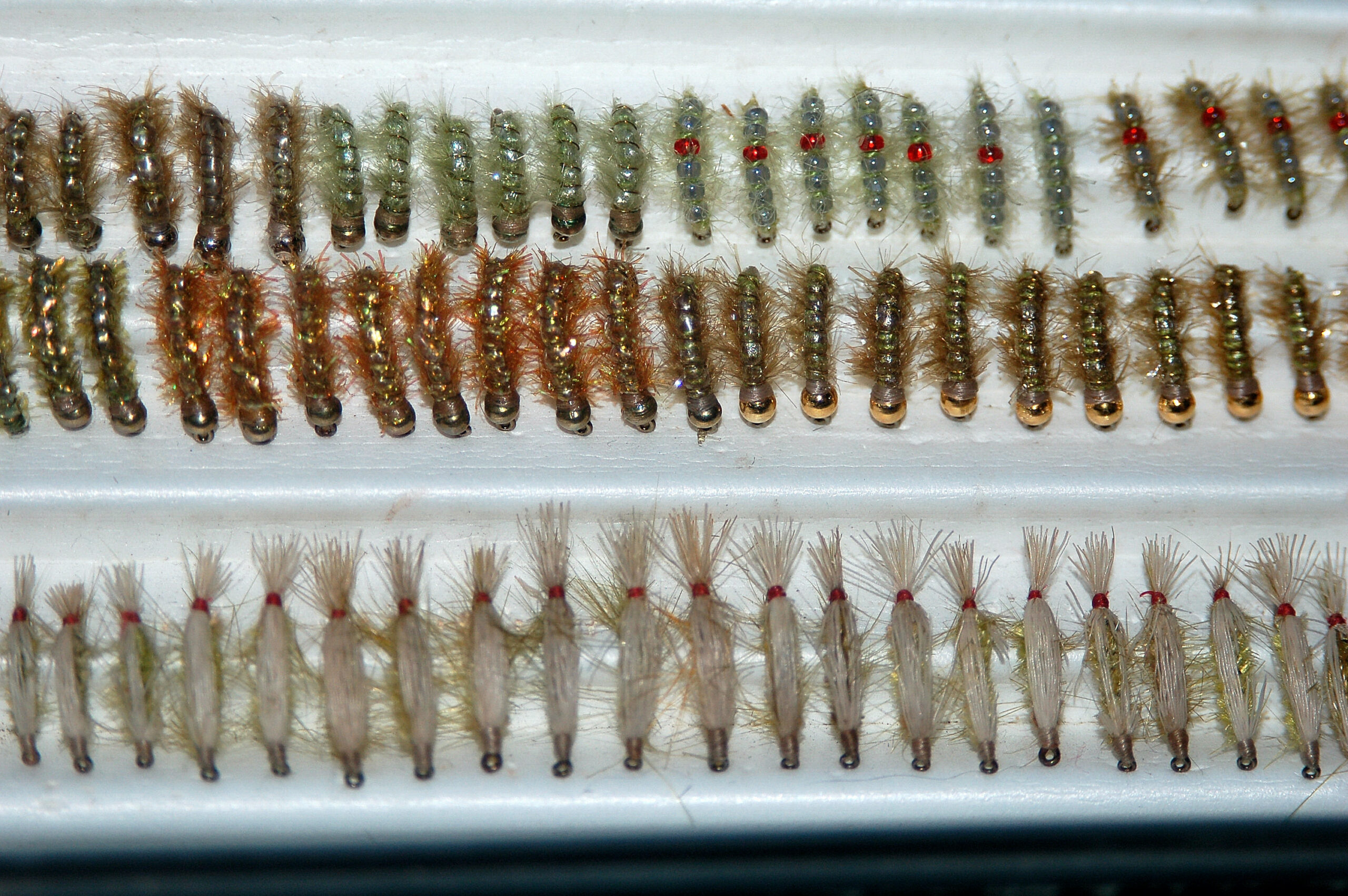
When tying any of the above imitations always keep in mind that natural Gammarus shrimp can be as large as a #10 hook in size and as small a #16. As for the much smaller Hyalella shrimp they vary in size from #14 to #18. They come in a wide variety of colors, but olive greens are always a safe bet. The best and easiest way to know which pattern to fish in a specific lake is by simply rolling over a rock or log to see what lives in the body of water you’re about to fish.
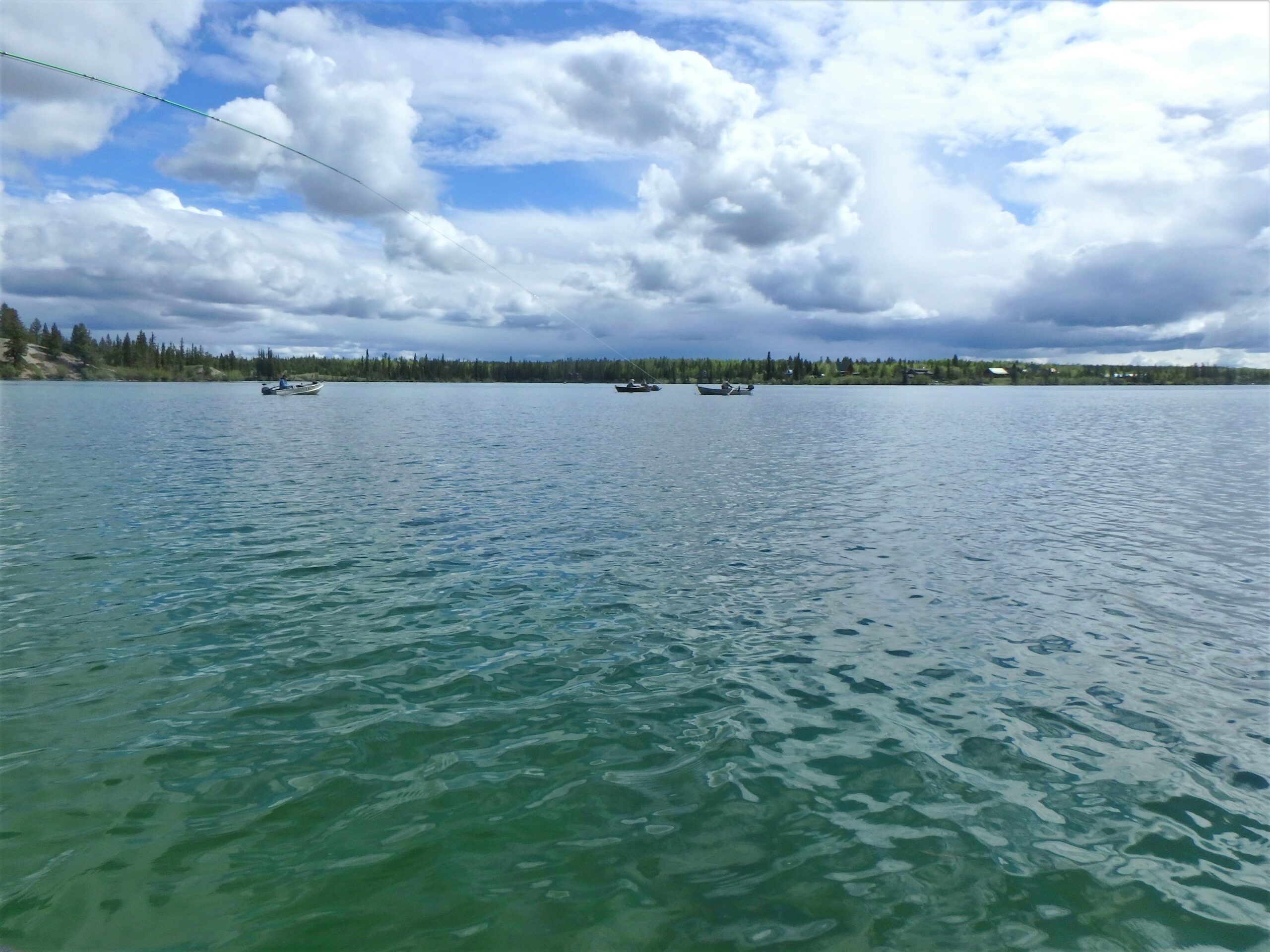
Even though shrimp are available in interior lakes year-round, they are often most productive in the early spring and fall when other insects are limited. In the fall trout start feeding heavily again after a long summer of eating very little. Always work the shrimp imitations close to shore. Many times, fish are hooked in only a few feet of water. I find myself using shrimp a good percentage of the time when fishing shoals for big trout in September and October.

It may take a few years to build confidence in fishing shrimp imitations but once you do it will quickly become one of your flies of choice too when fishing in the spring and fall.
Tom Johannesen
Tom Johannesen grew up fishing but at the age of 23 he had his first article published in a British Columbia Federation of Fly Fishers (BCFFF) newsletter and something changed.
Since that first article, Tom has been on a mission to master his craft and to share what he has learned with others. With over 200 articles published in magazines like BC Sport Fishing, BC Outdoors, Outdoor Edge, Canadian Fly Fisher, Home Waters, Reel Angler, Western Angler and Island Fisherman, it’s clear that it’s a mission he takes seriously. He also regularly hosts seminars and tutorials at fly clubs and shops in the hopes of lighting that spark in the next generation.


